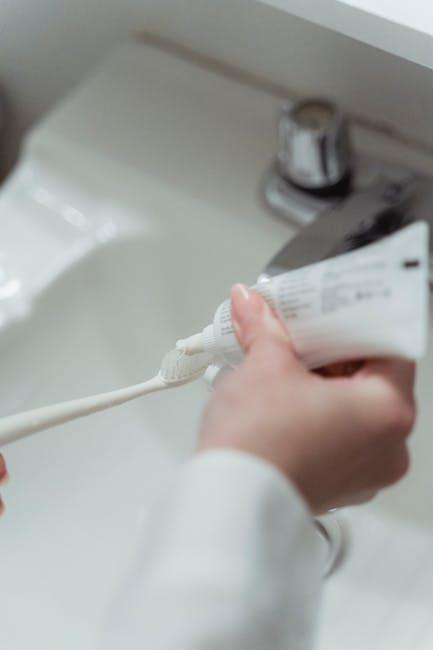Fluoride Ban Could Create Cavities for 1 of Every 3 U.S. Kids
Recent discussions around banning fluoride in drinking water have sparked significant concerns among dental health experts. A fluoride ban could lead to cavities for 1 in every 3 children in the United States, posing a public health crisis that demands urgent attention. In this article, we dive deep into why fluoride is essential, the potential consequences of a ban, and how parents can protect their children’s oral health amidst ongoing debates.
Understanding Fluoride: What Is It and Why Does It Matter?
Fluoride is a naturally occurring mineral found in water, soil, and various foods. It plays a critical role in strengthening tooth enamel and preventing tooth decay by making teeth more resistant to acid attacks from bacteria in the mouth.
Since the mid-20th century, fluoride has been added to public water systems as a safe, cost-effective method to improve dental health across populations. Its use is endorsed by multiple health organizations, including the American Dental Association (ADA), the Centers for Disease Control and Prevention (CDC), and the World Health Organization (WHO).
Key Benefits of Fluoride in Children’s Dental Health
- Reduces tooth decay: Fluoride decreases the risk of cavities by up to 25% in children and adults.
- Strengthens enamel: Helps remineralize weakened tooth surfaces, preventing decay progression.
- Cost-effective public health measure: Community water fluoridation saves millions in dental treatment costs annually.
- Safe at recommended levels: Scientifically proven to be safe when used in controlled water concentrations.
The Fluoride Ban Controversy: Risks and Consequences for U.S. Kids
Despite compelling scientific evidence, a growing movement advocates banning fluoride in drinking water due to concerns over its safety and environmental effects. However, eliminating fluoride from public water carries significant risks, especially for children’s dental health.
Potential Impact: Cavities for 1 in 3 Children
Studies estimate that without fluoridated water, nearly 33% of U.S. children could experience an increase in dental cavities within a few years. Tooth decay is the most common chronic disease among children and can lead to pain, infections, missed school days, and costly dental procedures.
| Risk Factor | Without Fluoride | With Fluoride |
|---|---|---|
| Incidence of Cavities | 33% increase in children | Up to 25% reduction |
| Dental Treatment Costs | Increased expenses for parents | Reduced by billions annually |
| School Absenteeism | More missed days due to dental pain | Lower absenteeism |
Additional Concerns of a Ban
- Increased oral health disparities: Children in low-income families and rural areas with less access to dental care rely heavily on water fluoridation.
- Greater burden on healthcare systems: Rising cavity rates would increase visits to dentists and emergency rooms.
- Negative impact on overall health: Poor dental health is linked to chronic conditions including heart disease and diabetes.
Expert Opinions & Case Studies
The CDC calls community water fluoridation one of the top 10 public health achievements of the 20th century. Numerous case studies have confirmed that areas stopping water fluoridation experience a spike in dental problems.
Case Study: City of Portland, Oregon
When Portland temporarily ceased fluoridation, dental clinics reported a 15% rise in cavities among children within a two-year span. Following the reinstatement of fluoride, cavity rates declined significantly.
Dental Professional Insights
Dr. Sarah Martinez, pediatric dentist: “Fluoride provides an essential shield for children’s teeth that other preventive measures alone can’t replace. A ban would severely undermine decades of progress we’ve made in oral health.”
Practical Tips to Protect Your Children’s Teeth With or Without Fluoride
Whether your community fluoridates water or not, these practical tips can help protect your children’s teeth:
- Maintain good oral hygiene: Brush twice daily with fluoride toothpaste and floss regularly.
- Schedule regular dental check-ups: Early dental visits can detect and manage cavities early.
- Limit sugary snacks and beverages: Sugar fuels cavity-causing bacteria.
- Consider fluoride supplements or treatments: Only under pediatric dentist recommendation.
- Encourage drinking tap water where fluoridated: Opt for community water over sugary drinks.
Conclusion: Why Fluoride Remains Crucial For U.S. Kids’ Oral Health
The fluoride ban debate is more than just regulatory discourse—it’s a potential tipping point for children’s dental health across America. Removing fluoride from public water could lead to cavities for 1 of every 3 children, increasing health disparities and dental treatment costs while reversing decades of public health gains.
For parents, policymakers, and healthcare professionals, the priority should be safeguarding access to fluoride and promoting comprehensive dental hygiene education. By working together to support scientifically backed preventive measures, we can continue to protect the smiles—and health—of future generations.
Stay informed. Protect your child’s smile. Support community water fluoridation.


